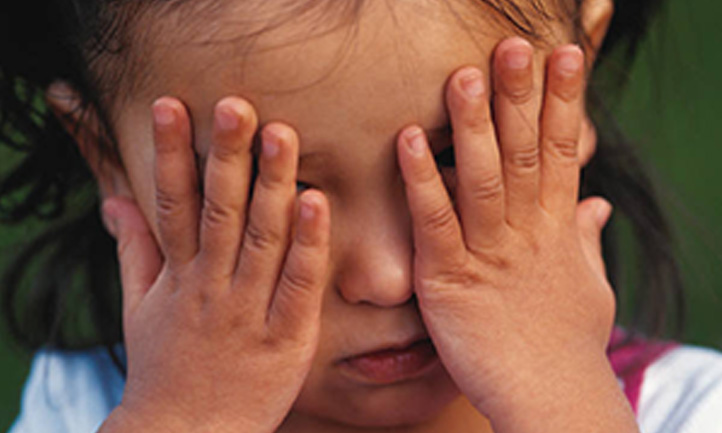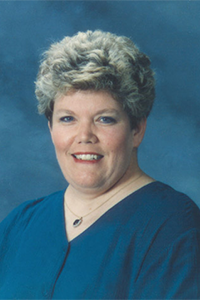Myths about Children and Grief
Author: Darcie Sims
Children are often shuttled off or ignored by adults who may be grieving themselves and do not have the energy, resources, or understanding necessary to help them. Society tends to pacify itself with the rationale that children are resilient and thus fails to recognize that children need as much compassion and support as adults require in adapting to dramatic or traumatic changes in their lives.

Loss, regardless of the cause, challenges the communication skills of both children and adults. Adults who are dealing with their own sense of loss and helplessness may find it difficult to respond to children's needs and questions. And so, we perpetuate the conspiracy of silence. We might think that children don't understand loss or death, so let's look at some of the myths about children and grief.
Children don't understand death; therefore, they don't grieve.
Most people do not believe that children, especially very young children, have any concept about death. Yet we know that even very young children can respond to changes in their environment, and certainly a death in a family brings about changes in the family environment. The change of routine and the increased volume of noise and activity in a grieving household are changes that will affect children. While they may not understand why these changes are occurring, they will be able to notice that they have occurred and will respond accordingly. One does not have to understand why something occurs in order to respond to it. Children do grieve, just not like adults.
Children don't hurt as much because they understand less.
This myth reflects a misperception that because children are less experienced and knowledgeable, they will not hurt as deeply as those with more knowledge and experience. Perhaps the opposite is true. When one has little information and limited experience, reality may seem more scary and overwhelming than when information and support are readily available. Children need age appropriate information, skills to identify their emotions, and ways to express them in order to appropriately cope with death and grief. Size has nothing to do with the hurt in one's heart.
Infants and toddlers are too young to grieve.
If a child is old enough to love and attach, he is old enough to grieve. Look for behavior changes that indicate responses to a changed environment to indicate an infant or pre-walker's grief. Increased demands for attention, loss of schedules such as sleeping all night or eating at certain times, regression to previously suspended self-comforting measures (thumb sucking, rocking, drinking from a bottle, etc.) are all signs of an infant or toddler's expressions of grief. Remember, they do not have to know the reason why something happens in order to experience the emotions of grief.
Children are resilient; they bounce back.
While children are, indeed, flexible both physically and emotionally, they are not rubber balls and do not simply bounce back from difficult experiences. Like adults, they must integrate their experiences into their knowledge base and find explanations for what happens to them. They will often grieve in short bursts of emotion rather than dwell on a particular feeling, as adults tend to do. The younger the child, the more quickly a grief moment may pass, but don't think a child is not grieving just because that child is playing outside or laughing at a cartoon. Children need as much compassionate understanding and support as adults do as they struggle through their grief.
Children are not affected by adults' grief.
Children are like sponges, absorbing everything they see, hear, and touch. Nothing escapes their notice! Therefore, children are affected by the grief they see the adults around them expressing. This does not have to mean they are affected in negative ways, however. Many adults express their grief in completely appropriate and effective ways, and children learn from observing these grieving patterns and styles. Adults should be aware of the power of their actions and words, as children are often the unseen audience for such performances. Children who receive honest communications, patient teaching, and supportive modeling will learn to embrace their emotions and find healthy, nondestructive ways to express grief.
Speaking of the deceased will reopen a child's grief wounds.
This is a commonly held myth for many cultures. It is believed that continuing to speak of the deceased and expressing the emotions of grief will add to one's grief experience rather than help dissipate the emotions. For most people, however, expressing grief and staying connected to the deceased through the sharing of memories helps with the integration of the loss and the changing of the relationship. It is the hiding of pictures and never speaking again of the deceased that often keeps the wounds of grief open. Encouraging the sharing of memories helps establish a new relationship with the deceased.
Children should be protected and shielded from the pain of grief.
Many adults believe this to be true simply because they cannot face their own grief reactions. Grief hurts! It is neither a sign of weakness nor a lack of faith. Grief is the price you pay for love and when someone you love dies, it does hurt. While it may seem kinder to shield a child from experiencing the pain of grief, hurt and pain have their lessons to teach. We cannot rob ourselves of the richness of the tapestry that hurt and love weave together. To eliminate one from the loom is to break the thread and lose the fullness of the pattern. One can learn to embrace the emotions of grief and grow through the hurt to reach the other side where memories can sustain us in our sorrow.
Children cope with grief more easily if they have lots of activities.
The idea behind this myth is the thought that if children are kept busy they won't have the time or energy to think, to experience grief, or to ask questions that the adults may not have the answers to. Keeping children busy simply as a way to avoid difficult questions is a temporary fix at best. Children are aware of what is happening around them and they will think about death, experience it, and question it, whether they are busy putting a puzzle together or lying quietly on their beds. Establishing and maintaining open lines of communication are among the most positive actions adults can take to help children process their experiences with death and grief.
Childhood bereavement leads to a maladjusted adult life.
While bereavement during childhood is certainly a traumatic experience, it does not necessarily mean a doomed adulthood. If children receive appropriate and adequate support during a bereavement experience, they will integrate the loss into their beings and adapt appropriately. Children who do not receive adequate and appropriate support and have not learned effective coping methods, however, can often experience delayed grief reactions and engage in inappropriate and destructive behaviors. While any bereavement experience is difficult, being bereaved does not automatically qualify someone for a maladaptive life.
A final thought
When you are discussing death with a child, remember that young children especially, think in concrete terms, not abstract ones. So when you say you lost Grandma, a young child may ask you to go find Grandma. Children have been taught to find the items they have lost, so it makes perfect sense for them to request that you help them search for the person who has become lost. Far better to say "died" than to have to explain that you don't really mean "lost" like in "lost a toy." The more you try to untwist that explanation, the more twisted it will become. And if you think about it, "died" is a difficult word to use, but "lost" is a hopeless one.
Look for simple ways to give voice to courage throughout the day. Maybe it is simply having the gumption to get out of bed. But maybe it's the courage to share how you feel about your loss with a coworker or friend, or to walk through the doors of a grief support group. It could simply be making a phone call you've been putting off, writing a thank you to someone who helped after the funeral, going to church alone, or finding the backbone to be honest with yourself about something you fear.
Healing after a death is hard. It takes courage in all shapes and sizes to mourn fully while living day to day. Congratulate yourself on welcoming courage, regardless of its size or reach.
 By Darcie D. Sims, PhD, CHT, CT, GMS: Dr. Darcie Sims is a bereaved parent and child, nationally certified thanatologist, certified pastoral bereavement specialist, and licensed psychotherapist and hypnotherapist. She is the president and cofounder of Grief, Inc., a grief consulting business, and the Director of the American Grief Academy in Seattle, Washington. Darcie is an internationally recognized speaker and writer, having authored seven books and numerous articles. She currently serves as the Director of Training and Certification for TAPS. For more information and a complete listing of her books, visit www.griefinc.com.
By Darcie D. Sims, PhD, CHT, CT, GMS: Dr. Darcie Sims is a bereaved parent and child, nationally certified thanatologist, certified pastoral bereavement specialist, and licensed psychotherapist and hypnotherapist. She is the president and cofounder of Grief, Inc., a grief consulting business, and the Director of the American Grief Academy in Seattle, Washington. Darcie is an internationally recognized speaker and writer, having authored seven books and numerous articles. She currently serves as the Director of Training and Certification for TAPS. For more information and a complete listing of her books, visit www.griefinc.com.
